Natural and Lab Grown Diamond Inclusions
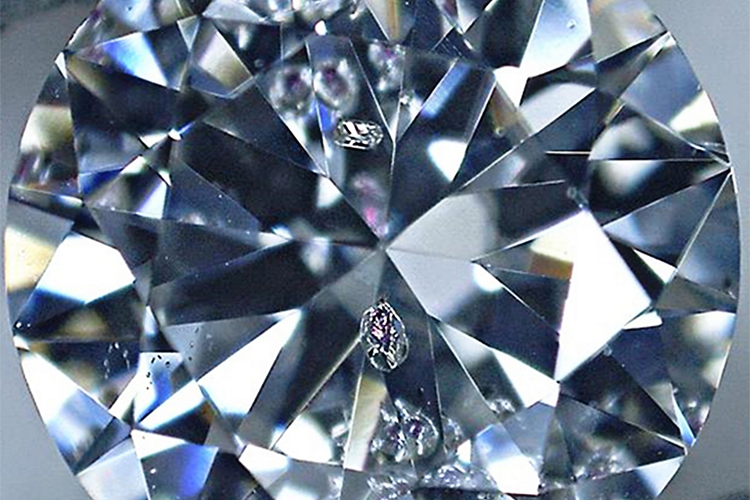
One of the fascinating features which gemologists are observing in diamonds, both natural and laboratory-grown, are inclusions.
Inclusions are imperfections within a diamond that are result of different events during formation of natural and lab-grown diamonds. While nothing could be done regarding presence of inclusions in natural diamonds, when it comes to laboratory-grown ones, diamond manufacturers constantly aim for the highest quality of stones, but at the same time trying to mimic nature.
The gemologist considers any optically detectable internal irregularity other than fractures an inclusion. Knowledge of inclusion types is essential and plays an important role in gemstone identification.
In natural diamonds inclusions help to learn and understand more about diamond origin, formation, and formation processes. In laboratory-grown diamonds it helps to identify growth methods.
Natural Diamonds
Natural diamonds crystallize in the earth’s mantle. Internal inclusions can become part of a diamond during its formation from distortion in the structure during growth. Clarity characteristics make every diamond unique. It is highly improbable that two diamonds would have the exact same inclusions in the same location. Inclusion can help distinguish lab-grown diamonds from natural diamonds. For instance, inclusions such as knot, twinning wisps, diamond crystals, other minerals, naturals, and indented naturals are evidence of the stone being a natural diamond.
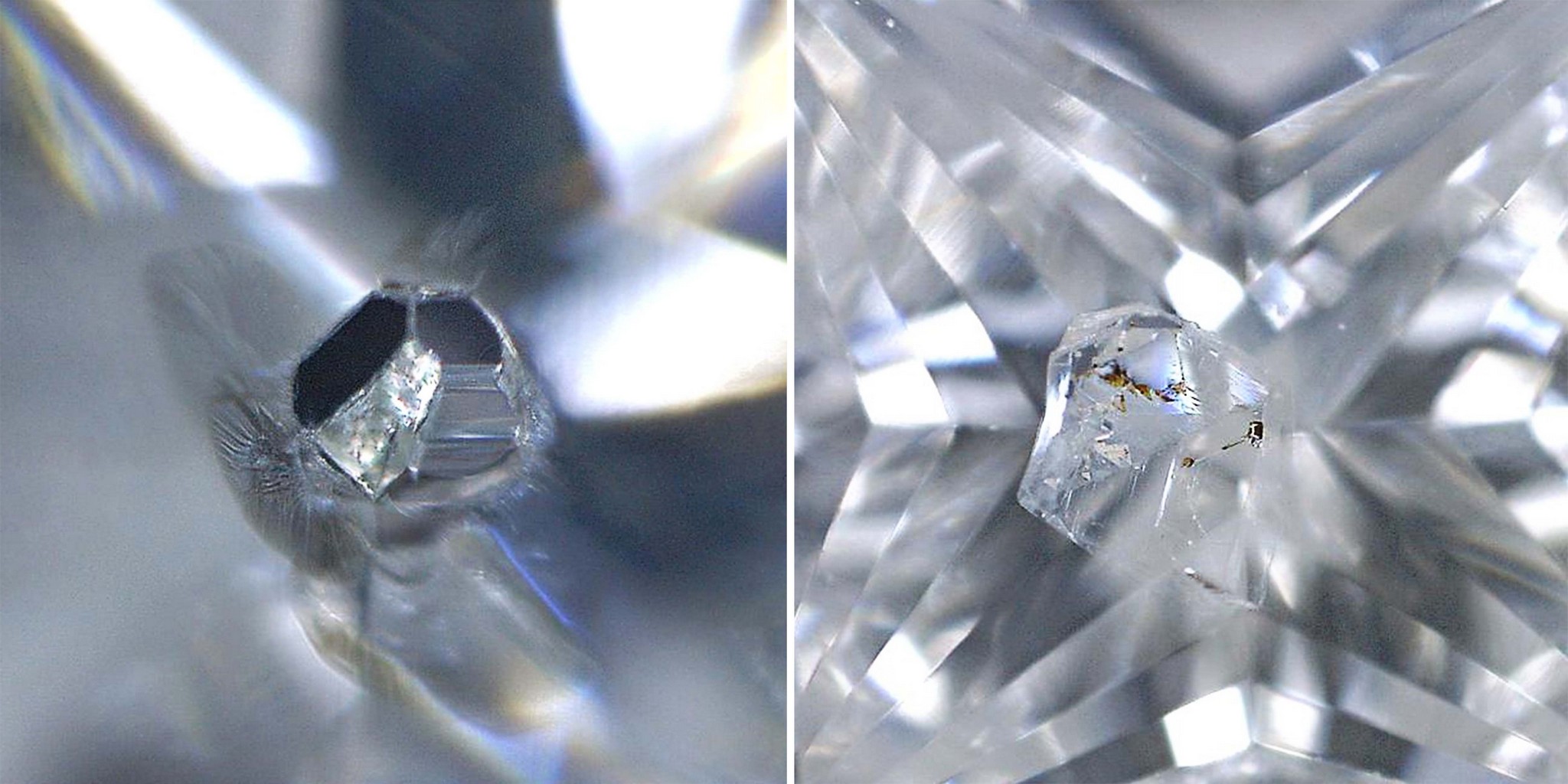
Most included crystals are smaller diamond crystal, usually appear white or transparent (above), they might also be crystal of other minerals – such as garnet or peridot which appear colored (below).
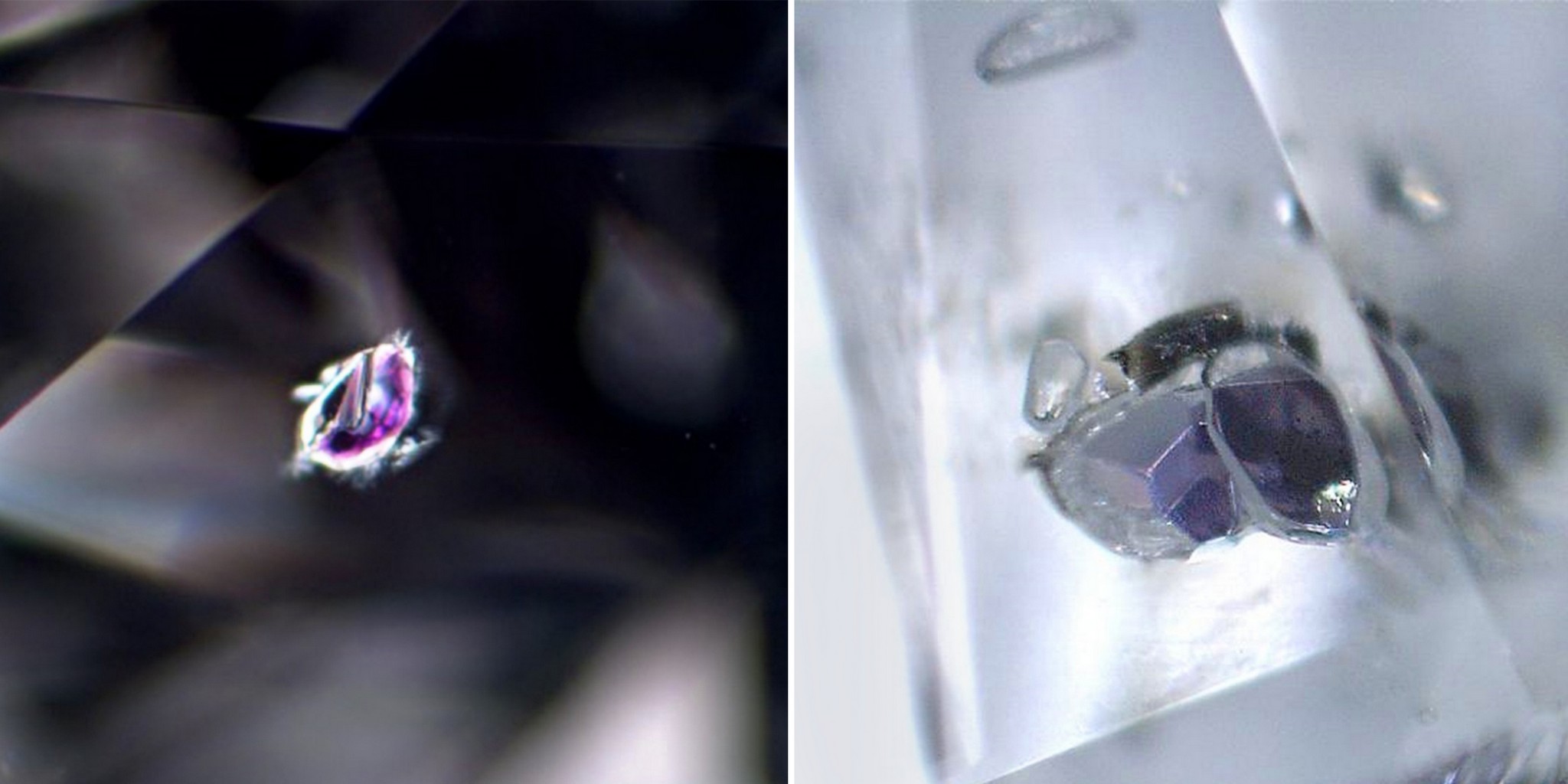
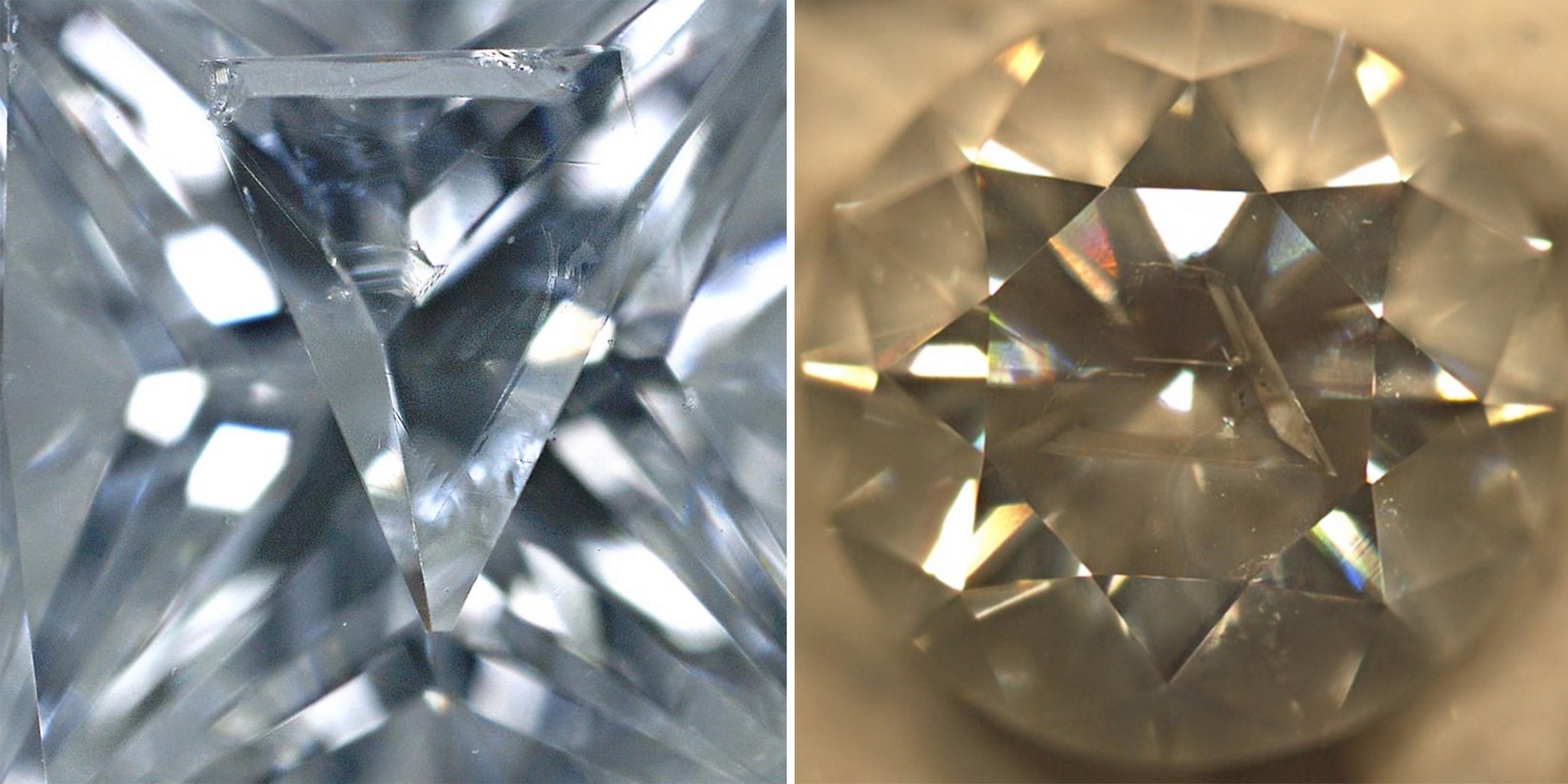
A knot is an included diamond crystal that extends to the surface.
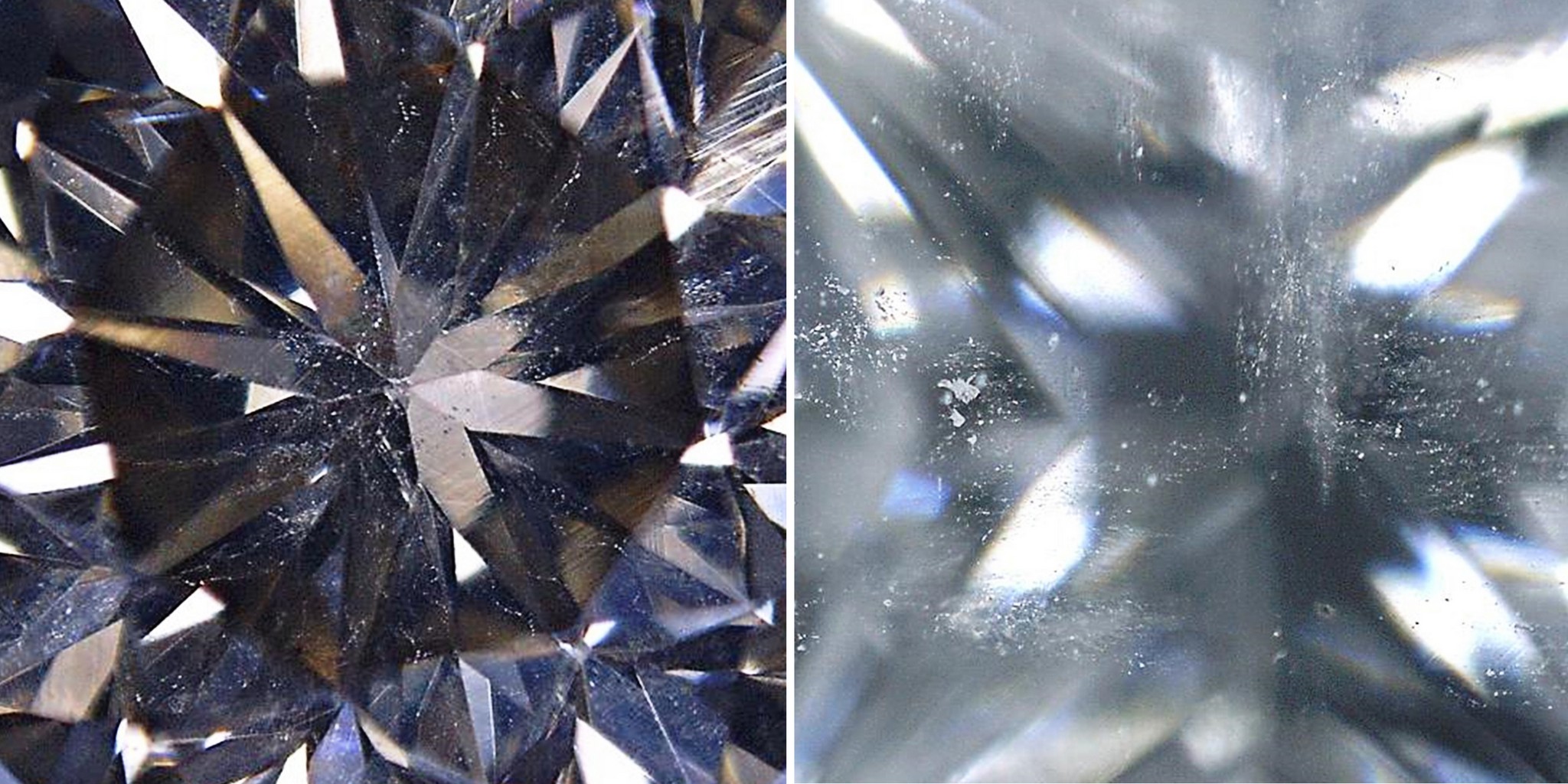
Cloud of pinpoints, needles and crystals.
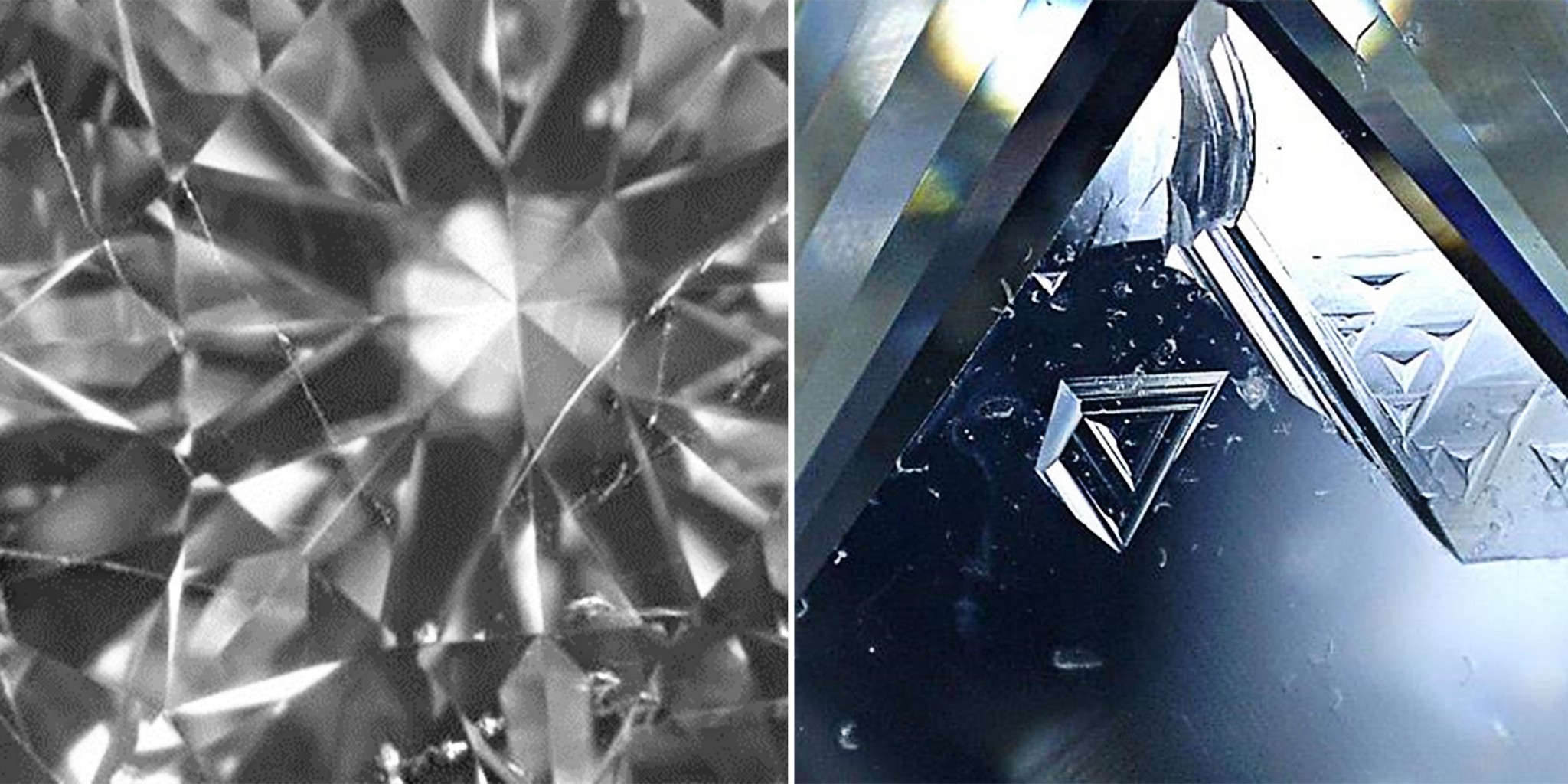
Twinning Wisp – A series of pinpoints, clouds or crystals that appear flat and ribbon-like and forms in a diamond’s twinned growth plane, associated with crystal distortion during growth (left). Natural – a portion of the rough’s original surface or skin left on a polished diamond. Natural shows smooth, irregular growth marks. The trigons are a common growth mark (right).
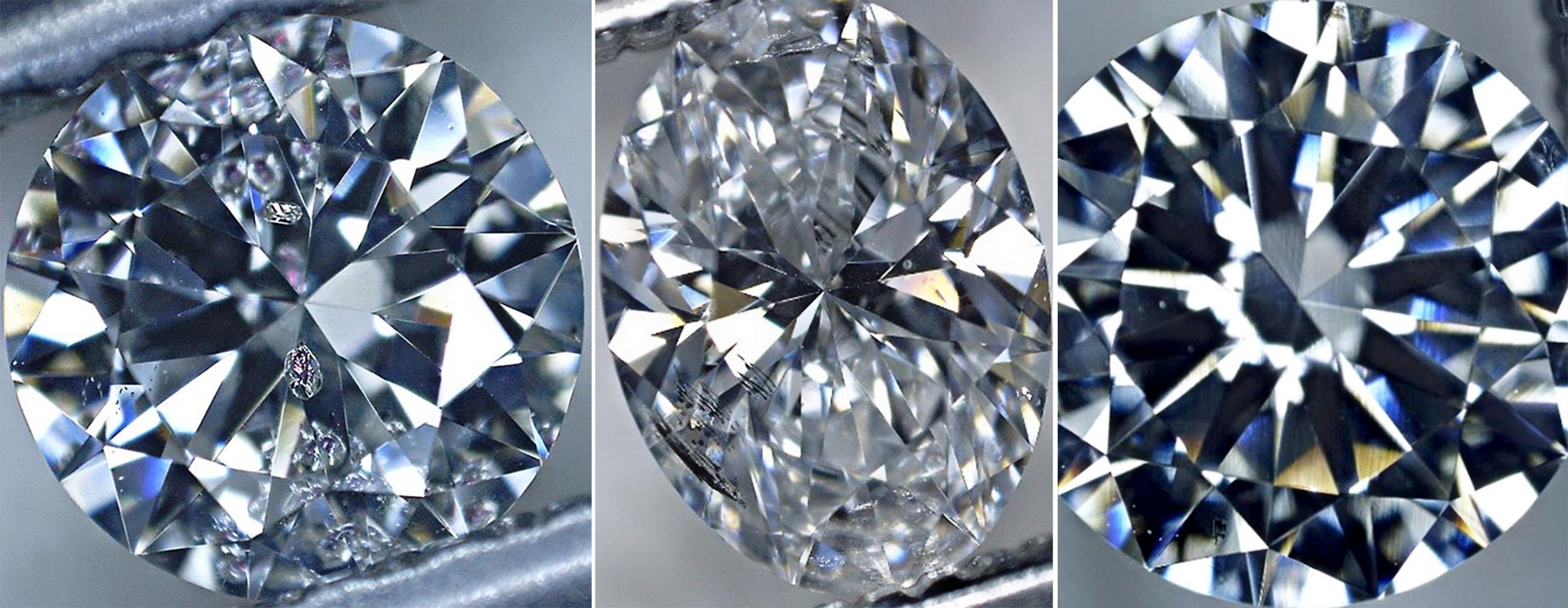
Precise analysis of inclusions can open the unique diamonds history and treatments. Correct identification of natural to lab-grown diamonds is important for market value and maintaining consumer confidence.
It’s important to know that there is distinct difference between inclusions in natural diamonds and laboratory-grown ones. However, we must remember that all purpose of diamond growing is to mimic what is happens in nature, and this applies to inclusions too. There is constant race to make laboratory-grown diamonds closer to natural ones in every aspect.
Today there are two main methods of growth: High Pleasure High Temperature (HPHT) and Chemical Vapor Deposition (CVD).
HPHT(High-Pressure High Temperature)
The diamonds grown by the HPHT method in the laboratory are created using a catalyst. The typical catalysts being used are iron, nickel, and cobalt; however, the use of other metals is possible as well. After the entire process is completed, we can observe metal inclusions formed by “trapping” a certain amount of catalyst flux during the formation process. In reflected light these inclusions appear white, gray, or black with a metallic luster, in transmitted light they are opaque. Inclusions can either appear isolated or in small groups. Often these inclusions are parallel to the outer surface of the rough crystal. However, they can also be boundaries between internal growth sectors. One interesting fact is that depending on the size of such inclusion and its location, the stone could possibly be picked up with a magnet when there is a presence of iron.

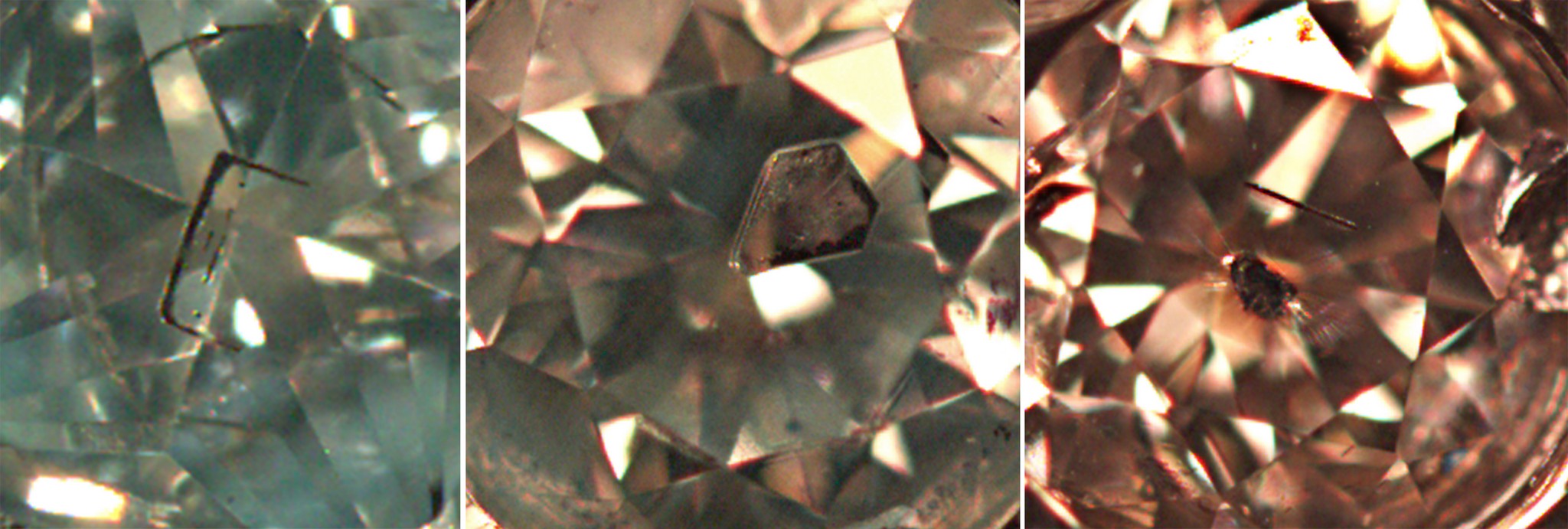
The metallic flux inclusions present in HPHT lab grown diamonds occur in a variety of shapes, including rods, irregular forms, and some are associated with feathers.
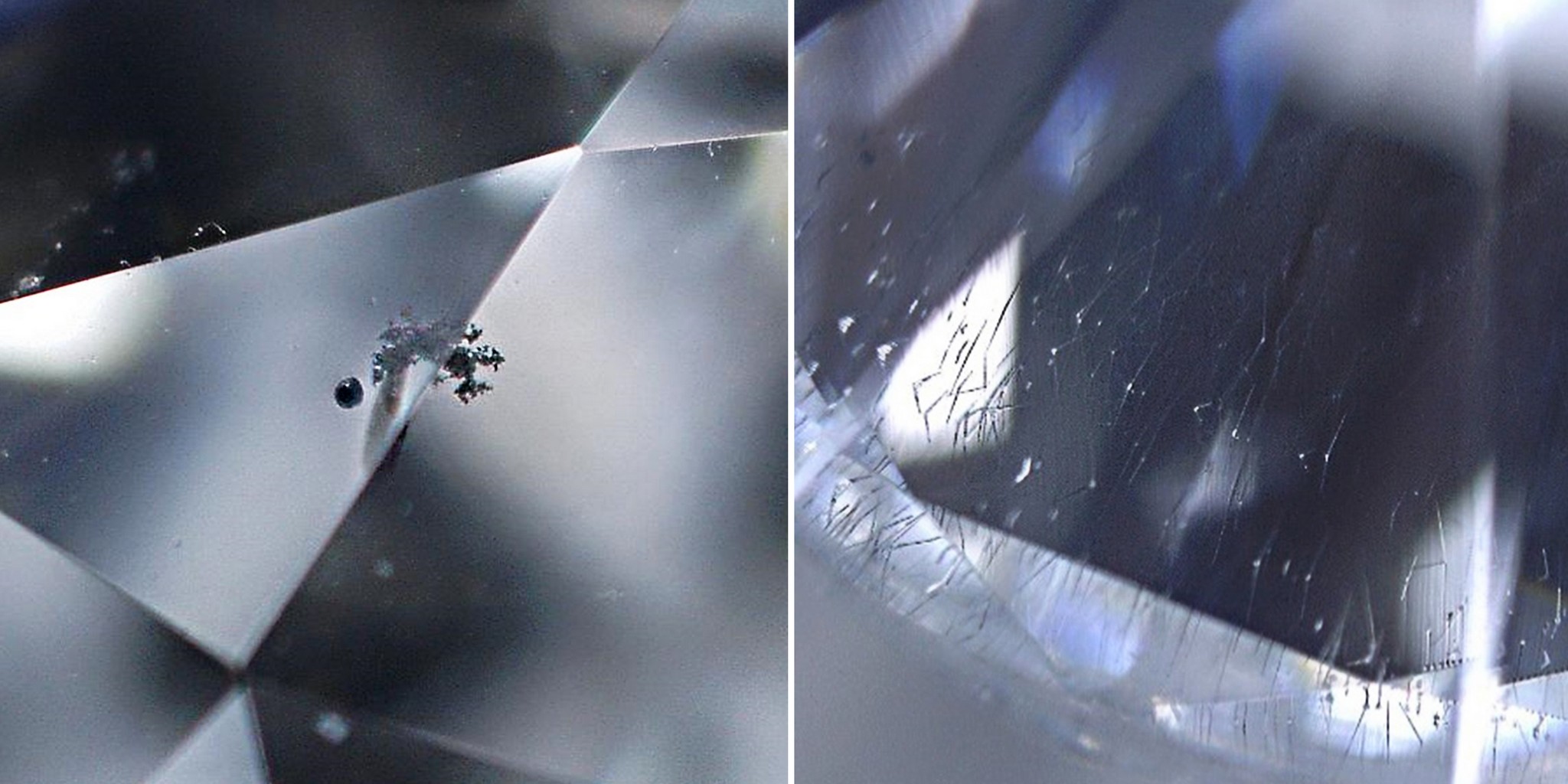
The dendritic cloud with small round metallic crystal (left)and thin needles (right).
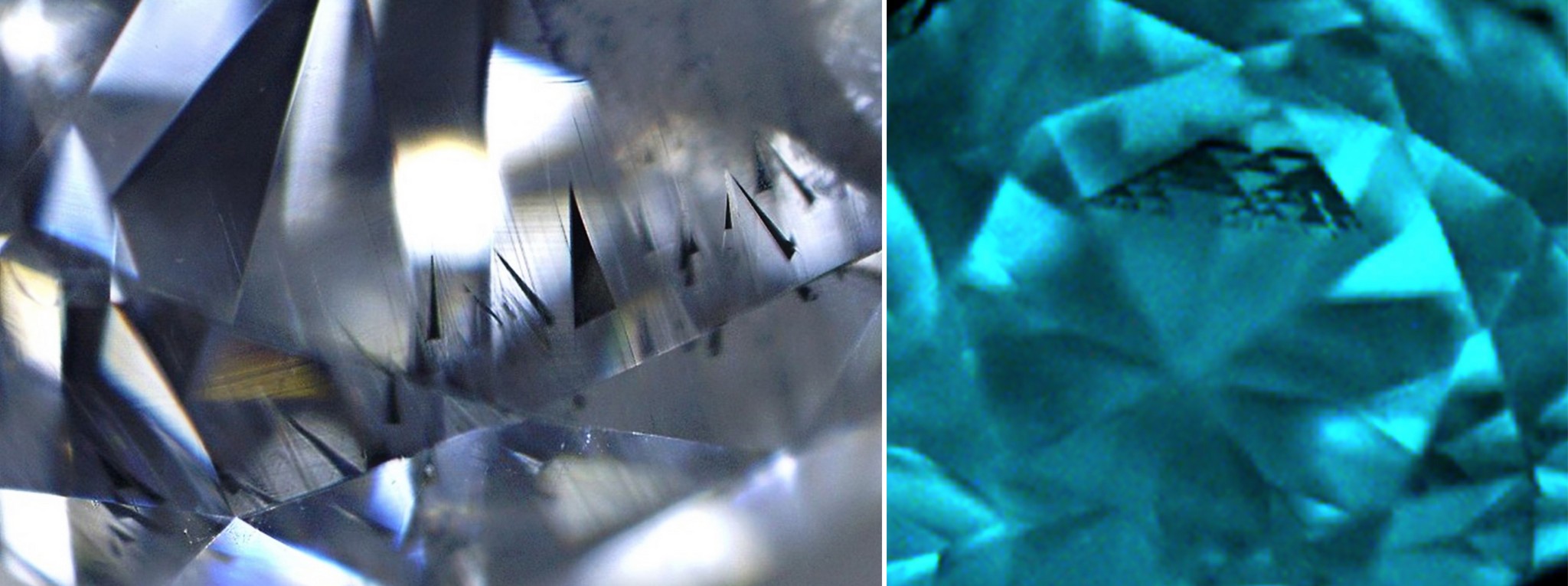
Groups of black triangular growth characteristics.
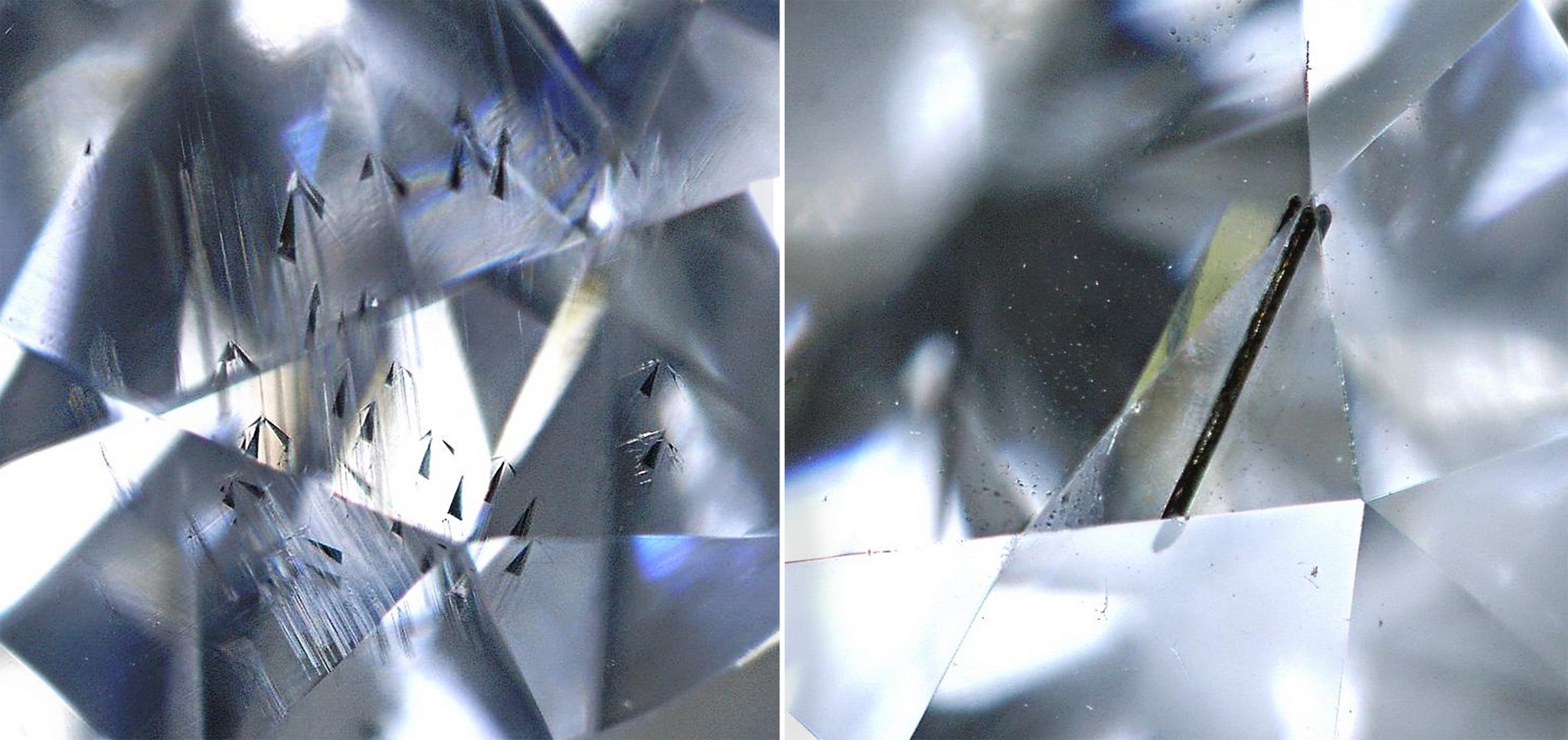
The triangular growth features and hair-like inclusions (left) and large metallic inclusion with a cloud of tiny pinpoints (right).
CVD(Chemical Vapor Deposition)
The diamonds grown by the CVD method are on a thin plate of single diamond substrate. This process occurs in a vacuum chamber filled with a mixture of gases; hydrogen and methane. These gases are activated by energy sources – typically a microwave. The released carbon atoms are deposited on a diamond’s substrate layer by layer.
CVD-grown synthetic diamonds do not have metallic inclusions. Rather, they often contain dark graphite or other mineral inclusions that are a result of their unique growth process. Graphite inclusions appear different from metallic, in that they do not have a metallic luster.
Inclusions in CVD diamonds occur as small dark particles or crystals that are generally non-diamond carbon.
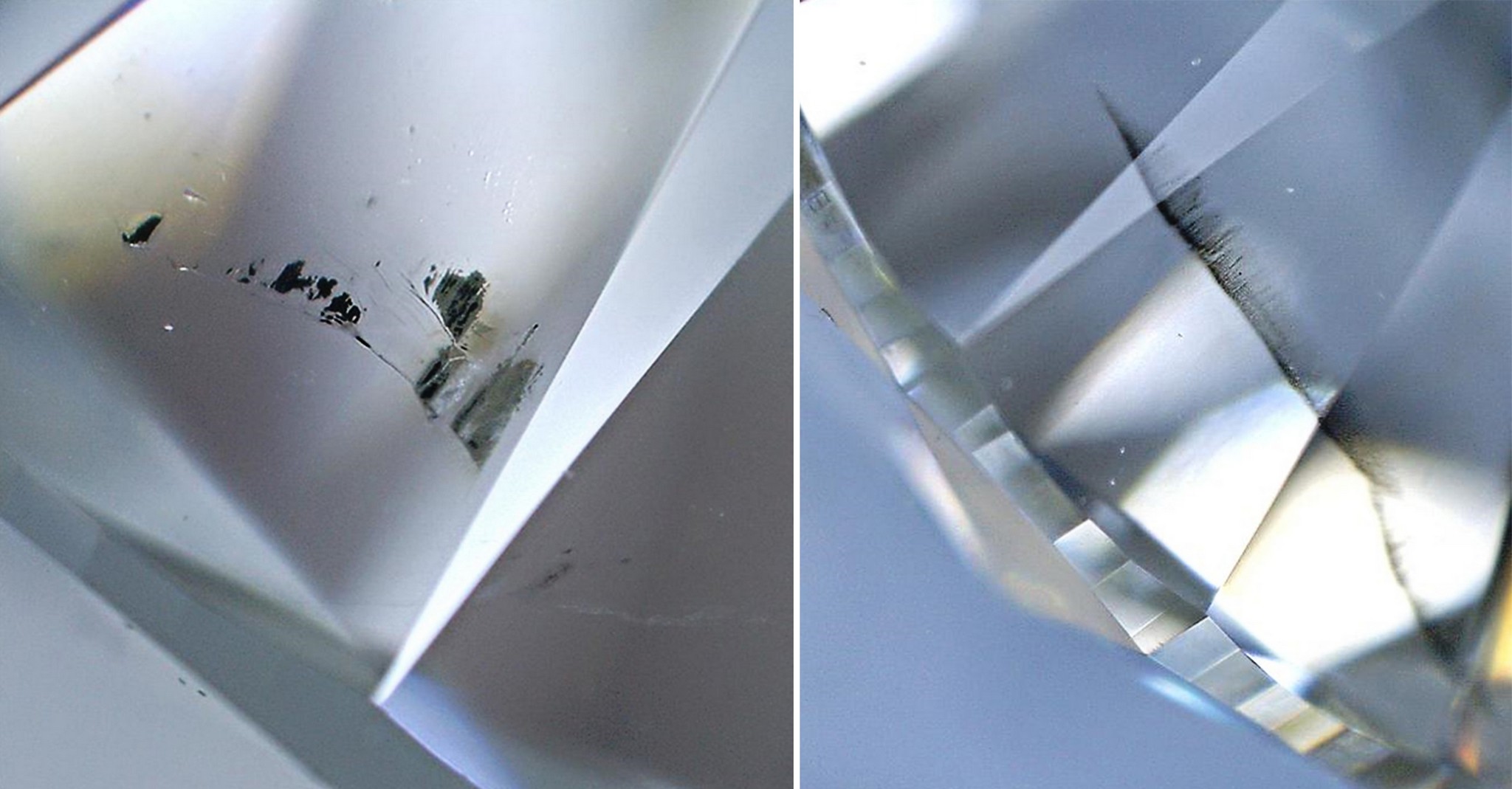
Fracture with non-diamond carbon.
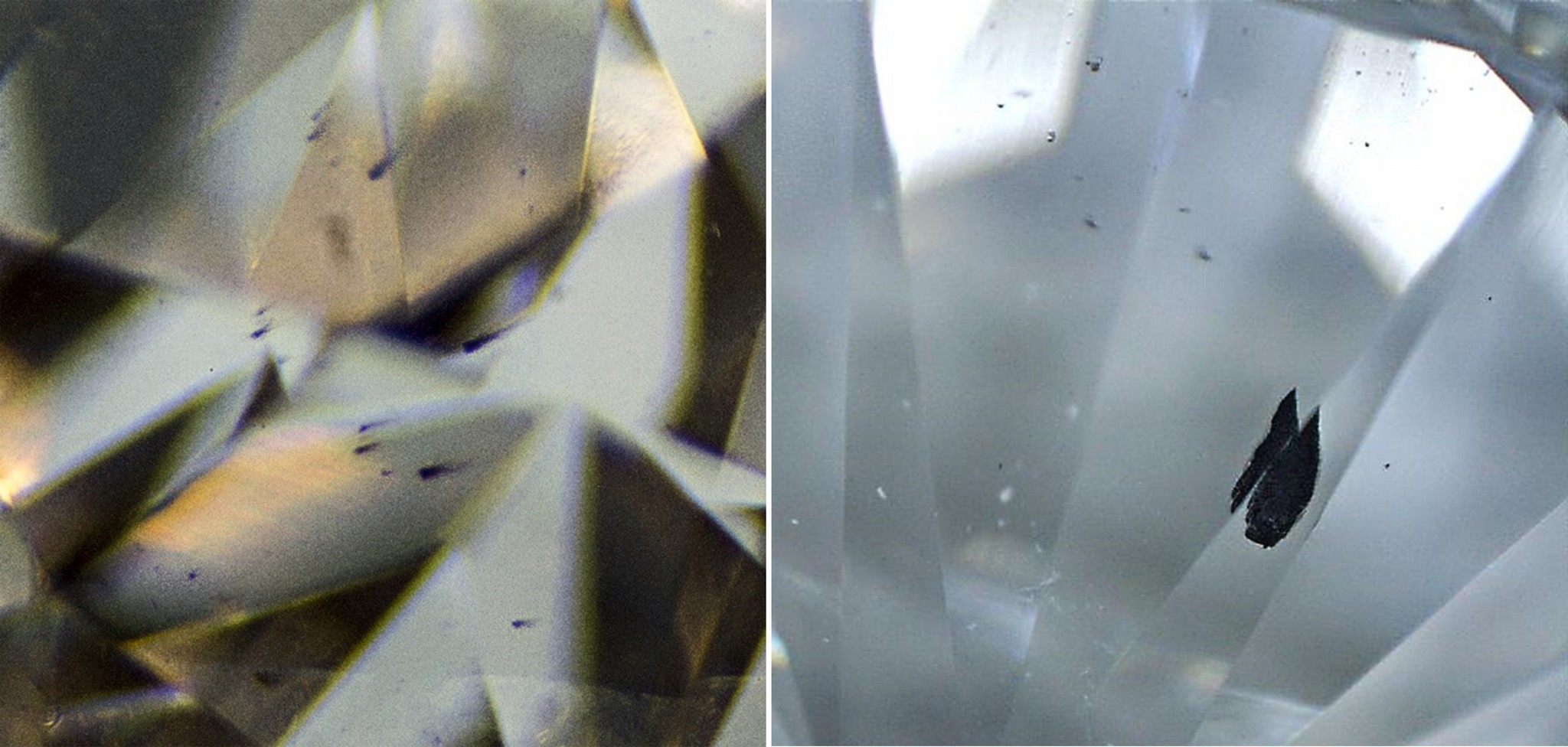
Internal features in the CVD lab-grown diamonds contain irregular black inclusions composed of non-diamond carbon.
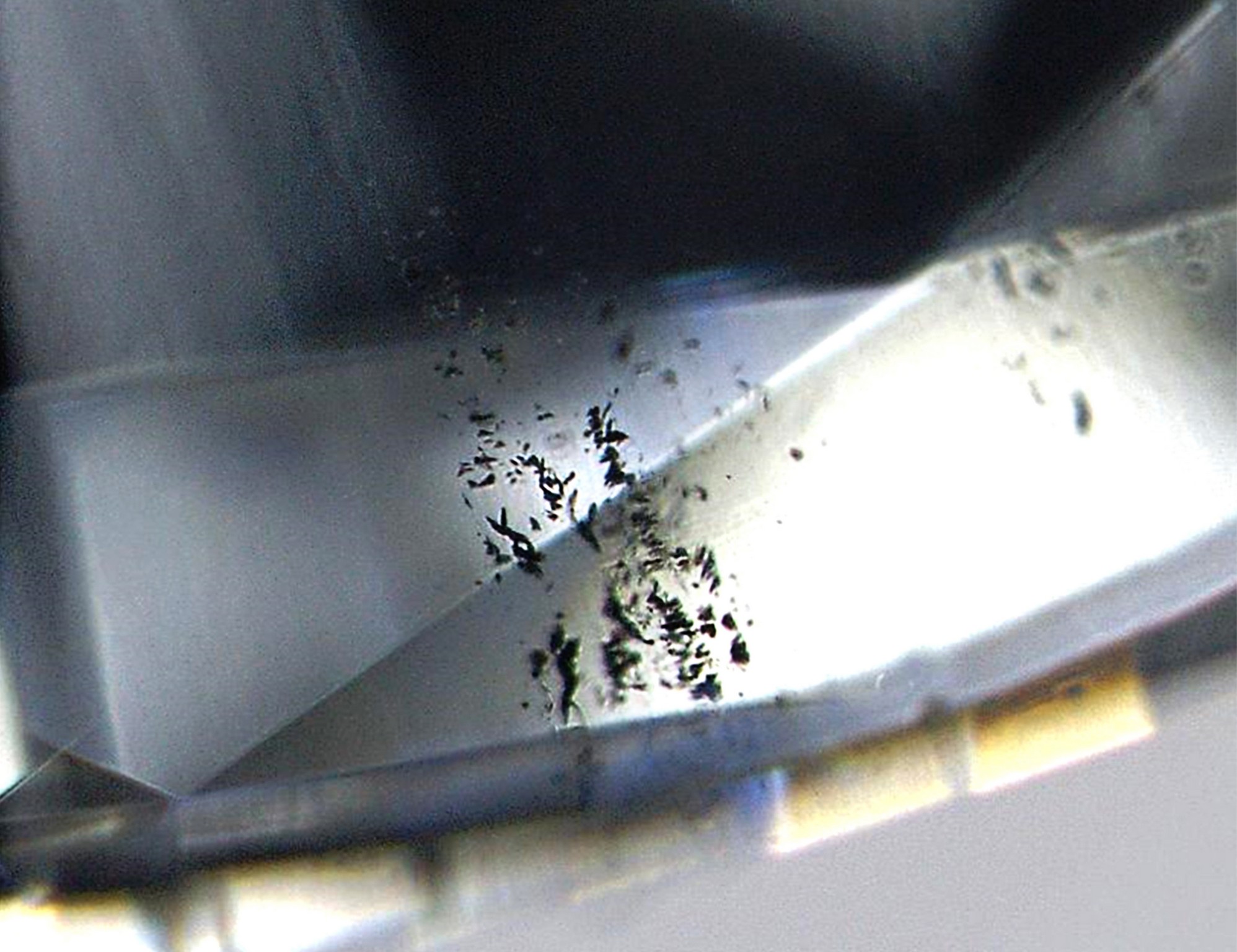
Clouds of small dark particles occur in CVD lab-grown diamonds.
Source: Gemological Science International, gemscience.net